Working For Notebookcheck
Are you a loyal reader of notebookcheck? Are you a techie who knows how to write? Then join our Team!
Especially wanted:
Review Editor - Details hereNews Editor - Details here
Review Editor - Details hereNews Editor - Details here
| Acer Aspire E5-575G | Lenovo IdeaPad 510-15IKB | Lenovo ThinkPad E470 | HP Pavilion 15-aw004ng | HP Pavilion 17-x110ng | |
| CPU | Intel Core i5-7200U | Intel Core i7-7500U | Intel Core i5-7200U | AMD A10-9600P | Intel Core i5-7200U |
| GPU | Nvidia GeForce GTX 950M | Nvidia GeForce 940MX | Nvidia GeForce 940MX | AMD Radeon R8 M445DX | AMD Radeon R7 M440MX |
| RAM | 8 GB DDR4-2133 | 12 GB DDR4-2400 | 8 GB DDR4-2133 | 8 GB DDR4-2133 | 8 GB DDR4-2133 |
| Price | 630 Euros | 999 Euros | 680 Euros | 599 Euros | 699 Euros |
See our Top 10 Notebooks:
» Multimedia, » Gaming, » Lightweight Gaming
» Budget Office, » Business, » Workstations
» Subnotebooks, » Ultrabooks, » Convertibles
» Budget Office, » Business, » Workstations
» Subnotebooks, » Ultrabooks, » Convertibles
» Top 10 under 300 Euros, » under 500 Euros
» Best Notebooks for University Students
» Top Windows alternatives to Apple's MacBook series
» Best Notebook Displays
» Best Notebooks for University Students
» Top Windows alternatives to Apple's MacBook series
» Best Notebook Displays
Top 10 Tablets / Smartphones:
Case
Size Comparison
The Dell Inspiron 15 5000 5567-1753 measures 39 x 25.9 centimeters and is 2.3 cm high (~15.3 x 10.2 x 0.9 inches). Our comparison shows that it has a slightly wider footprint than the other 15.6-inch models, while the length is average. Our test model tips the scale at 2.3 kg (~5.1 lb) and is therefore not the lightest laptop, because the HP Pavilion 15 only weighs 2 kg (~4.4 lb), and the Lenovo ThinkPad E470 even stays under the 2 kg mark. However, the latter is a 14-inch device, so this is not a completely fair comparison.
Connectivity
SD Card Reader
The card reader is located at the front of the right side. About 1/3 of the inserted card will stick out of the chassis. Our performance benchmarks are sobering. Similar to the HP Pavilion 17-x110ng, the performance cannot meet our expectations. We only determine 23.2 MB/s for the transfer of jpg files in combination with our fast reference card (Toshiba Exceria Pro SDXC 64 GB UHS-II), and the sequential read speed was limited to just 27.5 MB/s. Only the Lenovo IdeaPad 510-15IKB and the HP Pavilion 17-x110ng perform even worse in this respect. Occasional transfers from memory cards will be fine, but we recommend an external USB 3.0 solution when you often transfer large amounts of data.
| SDCardreader Transfer Speed | |
| average JPG Copy Test (av. of 3 runs) | |
| Lenovo ThinkPad E470-20H2S00400 (Toshiba Exceria Pro SDXC 64 GB UHS-II) | |
| Lenovo IdeaPad 510-15IKB 80SV0087GE (Toshiba Exceria Pro SDXC 64 GB UHS-II) | |
| Acer Aspire F15 F5-573G-53V1 (Toshiba Exceria Pro SDXC 64 GB UHS-II) | |
| HP Pavilion 15-aw004ng W8Y60EA (Toshiba Exceria Pro SDXC 64 GB UHS-II) | |
| Acer Aspire E5-575G-549D (Toshiba Exceria Pro SDXC 64 GB UHS-II) | |
| Dell Inspiron 15 5000 5567-1753 (Toshiba Exceria Pro SDXC 64 GB UHS-II) | |
| HP Pavilion 17-x110ng (Toshiba Exceria Pro SDXC 64 GB UHS-II) | |
| maximum AS SSD Seq Read Test (1GB) | |
| HP Pavilion 15-aw004ng W8Y60EA (Toshiba Exceria Pro SDXC 64 GB UHS-II) | |
| Lenovo ThinkPad E470-20H2S00400 (Toshiba Exceria Pro SDXC 64 GB UHS-II) | |
| Acer Aspire E5-575G-549D (Toshiba Exceria Pro SDXC 64 GB UHS-II) | |
| Dell Inspiron 15 5000 5567-1753 (Toshiba Exceria Pro SDXC 64 GB UHS-II) | |
| Lenovo IdeaPad 510-15IKB 80SV0087GE (Toshiba Exceria Pro SDXC 64 GB UHS-II) | |
| HP Pavilion 17-x110ng (Toshiba Exceria Pro SDXC 64 GB UHS-II) | |
Communication
| Networking | |
| iperf3 Client (receive) TCP 1 m 4M x10 | |
| Lenovo ThinkPad E470-20H2S00400 | |
| Dell Inspiron 15 5000 5567-1753 (I210-T1) | |
| HP Pavilion 17-x110ng (I210-T1) | |
| iperf3 Client (transmit) TCP 1 m 4M x10 | |
| Lenovo ThinkPad E470-20H2S00400 | |
| Dell Inspiron 15 5000 5567-1753 (I210-T1) | |
| HP Pavilion 17-x110ng (I210-T1) | |
Security
The list of security features confirms that our test model is a multimedia device. Users only get a slot for a Noble Security Lock as well as a Trusted Platform Module 2.0 (TPM). There is also the software McAfee LiveSafe with a 12-month subscription.
Accessories
The box only includes the laptop as well as the power adapter besides the usual support information and service manuals. A CD with drivers would have been a nice addition, but is unfortunately not included. Corresponding accessories like the Dell Wireless Mouse or a Dell Performance Headset have to be purchased separately.
Maintenance
Operating System
Our test model was shipped with the 64-bit version of Windows 10. Dell's support website also lists drivers for Ubuntu 16.04, so it should be no problem to use the open source operating system.
Warranty
Dell grants a one-year pickup & repair hardware support by default, and there are no other options when you purchase the device on the website. Other shops sometimes offer the notebook with a 24-month warranty, and there can also be special services depending on the shop.
Input Devices
Keyboard
Touchpad
Display
| |||||||||||||||||||||||||
X-Rite i1Pro 2
Maximum: 152 cd/m² Average: 144.2 cd/m² Minimum: 11.3 cd/m²Brightness Distribution: 90 %
Center on Battery: 187 cd/m²
Contrast: 296:1 (Black: 0.49 cd/m²)
ΔE Color 9.27 | - Ø
ΔE Greyscale 12.28 | - Ø
55% sRGB (Argyll) 35% AdobeRGB 1998 (Argyll)
Gamma: 2.03
| Dell Inspiron 15 5000 5567-1753 BOE NT15N41, 1920x1080, 15.6 | Acer Aspire E5-575G-549D Chi Mei CMN15C4, 1920x1080, 15.6 | Lenovo IdeaPad 510-15IKB 80SV0087GE BOE HF NV156FHM-N42, 1920x1080, 15.6 | Lenovo ThinkPad E470-20H2S00400 N140HCA-EAB, 1920x1080, 14 | HP Pavilion 15-aw004ng W8Y60EA Chi Mei, 1920x1080, 15.6 | HP Pavilion 17-x110ng Chi Mei CMN1738, 1920x1080, 17.3 | |
|---|---|---|---|---|---|---|
| Response Times |
-31%
|
-95%
|
-56%
|
-30%
|
-55%
| |
| Response Time Grey 50% / Grey 80% * |
43
|
39
9%
|
51
-19%
|
40.8
5%
|
41
5%
|
41
5%
|
| Response Time Black / White * |
14
|
24
-71%
|
38
-171%
|
30.4
-117%
|
23
-64%
|
30
-114%
|
| PWM Frequency |
50
|
200
| ||||
| Screen |
11%
|
76%
|
39%
|
17%
|
44%
| |
| Brightness |
144
|
169
17%
|
265
84%
|
231
60%
|
228
58%
|
285
98%
|
| Brightness Distribution |
90
|
91
1%
|
86
-4%
|
89
-1%
|
89
-1%
|
88
-2%
|
| Black Level * |
0.49
|
0.47
4%
|
0.23
53%
|
0.37
24%
|
0.49
-0%
|
0.61
-24%
|
| Contrast |
296
|
374
26%
|
1265
327%
|
659
123%
|
490
66%
|
472
59%
|
| Colorchecker DeltaE2000 * |
9.27
|
8.83
5%
|
4.78
48%
|
6.41
31%
|
10.96
-18%
|
4.56
51%
|
| Greyscale DeltaE2000 * |
12.28
|
8.97
27%
|
3.49
72%
|
5.94
52%
|
11.34
8%
|
4.95
60%
|
| Gamma |
2.03 118%
|
2.43 99%
|
2.58 93%
|
2.28 105%
|
2.27 106%
|
2.48 97%
|
| CCT |
10732 61%
|
10234 64%
|
6013 108%
|
6101 107%
|
12292 53%
|
7669 85%
|
| Color Space (Percent of AdobeRGB 1998) |
35
|
36.8
5%
|
40
14%
|
39.3
12%
|
39
11%
| |
| Color Space (Percent of sRGB) |
55
|
57.3
4%
|
64
16%
|
61.1
11%
|
60
9%
|
93
69%
|
| Total Average (Program / Settings) |
-10% / 3%
|
-10% / 42%
|
-9% / 20%
|
-7% / 7%
|
-6% / 22%
|
* ... smaller is better
Display Response Times
| ↔ Response Time Black to White | ||
|---|---|---|
| 14 ms ... rise ↗ and fall ↘ combined | ↗ 6 ms rise | |
| ↘ 8 ms fall | ||
| The screen shows good response rates in our tests, but may be too slow for competitive gamers. In comparison, all tested devices range from 0.8 (minimum) to 240 (maximum) ms. » 7 % of all devices are better. This means that the measured response time is better than the average of all tested devices (27.3 ms). | ||
| ↔ Response Time 50% Grey to 80% Grey | ||
| 43 ms ... rise ↗ and fall ↘ combined | ↗ 18 ms rise | |
| ↘ 25 ms fall | ||
| The screen shows slow response rates in our tests and will be unsatisfactory for gamers. In comparison, all tested devices range from 0.9 (minimum) to 276 (maximum) ms. » 54 % of all devices are better. This means that the measured response time is similar to the average of all tested devices (43 ms). | ||
Screen Flickering / PWM (Pulse-Width Modulation)
| Screen flickering / PWM not detected | ||
In comparison: 59 % of all tested devices do not use PWM to dim the display. If PWM was detected, an average of 655 (minimum: 43 - maximum: 28740) Hz was measured.
| ||
Performance
The system performance of the Inspiron 15 5000 is convincing. Dell equips the 15.6-inch laptop with a powerful Intel Core i7-7500U processor in combination with an 8 GB DDR4-RAM module. The performance of the Kaby Lake CPU is more than sufficient for the intended usage scenarios, and there should not be any problems in the near future, either. The 2.5-inch SSD is a decent solution for average users, but the storage capacity could be an issue very soon when you consider the classification as a multimedia device. Dell also offers a model with a 2 TB hard drive, but you cannot enjoy the advantages of the SSD in this case. We would prefer a 500 GB or 1 TB SSD.
Processor
* ... smaller is better
System Performance
| PCMark Vantage Result |
| 15917 points |
| PCMark 7 Score |
| 5650 points |
| PCMark 8 Home Score Accelerated v2 |
| 3978 points |
| PCMark 8 Creative Score Accelerated v2 |
| 4862 points |
| PCMark 8 Work Score Accelerated v2 |
| 5033 points |
Help
Storage Devices
| Dell Inspiron 15 5000 5567-1753 SanDisk X400 SED 256GB, SATA (SD8TB8U-256G) | Acer Aspire E5-575G-549D Toshiba MQ01ABD100 | Lenovo IdeaPad 510-15IKB 80SV0087GE Liteonit CV3-DE256 | Lenovo ThinkPad E470-20H2S00400 SanDisk X400 SED 256GB, SATA (SD8TB8U-256G) | HP Pavilion 15-aw004ng W8Y60EA | HP Pavilion 17-x110ng SanDisk Z400s SD8SNAT-256G | |
|---|---|---|---|---|---|---|
| CrystalDiskMark 3.0 |
-93%
|
0%
|
-1%
|
-31%
|
-15%
| |
| Write 4k QD32 |
239.6
|
0.722
-100%
|
245.9
3%
|
178.3
-26%
|
131.4
-45%
|
272.7
14%
|
| Read 4k QD32 |
285.2
|
0.647
-100%
|
364.7
28%
|
276
-3%
|
125
-56%
|
145.4
-49%
|
| Write 4k |
55.87
|
0.726
-99%
|
66.8
20%
|
78.82
41%
|
46.55
-17%
|
86.03
54%
|
| Read 4k |
29.25
|
0.366
-99%
|
28.68
-2%
|
35.15
20%
|
17.04
-42%
|
11.24
-62%
|
| Write 512 |
385.7
|
25.93
-93%
|
297.9
-23%
|
291.1
-25%
|
281.2
-27%
|
300.3
-22%
|
| Read 512 |
382.8
|
29.32
-92%
|
338.3
-12%
|
346.4
-10%
|
261.9
-32%
|
290.2
-24%
|
| Write Seq |
458.1
|
85.61
-81%
|
431.5
-6%
|
458.7
0%
|
316.6
-31%
|
325.1
-29%
|
| Read Seq |
502.2
|
95.33
-81%
|
469.2
-7%
|
476.5
-5%
|
502.8
0%
|
500.1
0%
|
GPU Performance
| 3DMark | |
| 1920x1080 Fire Strike Graphics | |
| Acer Aspire E5-575G-549D | |
| HP Pavilion 15-aw004ng W8Y60EA | |
| Lenovo ThinkPad E470-20H2S00400 | |
| Dell Inspiron 15 5000 5567-1753 | |
| HP Pavilion 17-x110ng | |
| 1280x720 Cloud Gate Standard Graphics | |
| Acer Aspire E5-575G-549D | |
| HP Pavilion 15-aw004ng W8Y60EA | |
| Dell Inspiron 15 5000 5567-1753 | |
| Lenovo ThinkPad E470-20H2S00400 | |
| HP Pavilion 17-x110ng | |
| 3DMark 03 Standard |
| 25949 points |
| 3DMark 05 Standard |
| 21189 points |
| 3DMark 06 Standard |
| 12657 points |
| 3DMark Vantage P Result |
| 6872 points |
| 3DMark 11 Performance |
| 2422 points |
| 3DMark Ice Storm Standard Score |
| 44716 points |
| 3DMark Cloud Gate Standard Score |
| 7092 points |
| 3DMark Fire Strike Score |
| 1455 points |
| 3DMark Fire Strike Extreme Score |
| 705 points |
| 3DMark Time Spy Score |
| 530 points |
Help
Gaming Performance
The dedicated AMD Radeon R7 M445 sounds promising, but you should not expect too much. The performance is often not sufficient to handle modern games in the native resolution. However, many titles can be played smoothly when you use the HD resolution in combination with medium settings. We saw that the AMD Radeon R7 M445 fell behind the Nvidia GeForce 940MX in the 3DMark benchmarks, but the situation changes in the actual gaming benchmarks and the AMD can sometimes manage higher frame rates. All in all, the performance is sufficient for occasional gaming sessions with reduced resolutions and graphics settings. Otherwise, you will have to get a notebook with a more powerful GPU.
| low | med. | high | ultra | ||
| BioShock Infinite (2013) | 98.7 | 53.9 | 44.5 | 13.8 | fps |
| Battlefield 4 (2013) | 74.3 | 49.6 | 32.7 | 11.7 | fps |
| Sims 4 (2014) | 132.9 | 66.9 | 28.8 | 27.4 | fps |
| GTA V (2015) | 50.7 | 43.7 | 12.2 | fps | |
| The Witcher 3 (2015) | 30.8 | 18.2 | 9.6 | 4.7 | fps |
| Rainbow Six Siege (2015) | 64.4 | 37.8 | 20.1 | 13.5 | fps |
| Rise of the Tomb Raider (2016) | 29.6 | 15.1 | 8.5 | 6.7 | fps |
| XCOM 2 (2016) | 22.8 | 7.9 | 5.2 | 4.9 | fps |
| Far Cry Primal (2016) | 27 | 12 | 10 | fps | |
| The Division (2016) | 32.4 | 24.5 | 9.6 | 6.7 | fps |
| Doom (2016) | 35 | 28 | 14 | fps | |
| Overwatch (2016) | 75.3 | 52.6 | 23.5 | 14.1 | fps |
| Deus Ex Mankind Divided (2016) | 21 | 14 | 7 | fps | |
| FIFA 17 (2016) | 61.8 | 59.7 | 34.6 | 29.4 | fps |
| Battlefield 1 (2016) | 40 | 28 | 13 | 12 | fps |
| Farming Simulator 17 (2016) | 64.2 | 42.9 | 16.9 | 10 | fps |
| Titanfall 2 (2016) | 57 | 41 | 17 | 16 | fps |
| Call of Duty Infinite Warfare (2016) | 27 | 24 | 16 | fps | |
| Dishonored 2 (2016) | 23.4 | 18.6 | 12.2 | 9.9 | fps |
| Watch Dogs 2 (2016) | 30.2 | 24.1 | 11.5 | fps | |
| Resident Evil 7 (2017) | 55.3 | 24.1 | 13.9 | fps |
Discussion
Emissions
System Noise
Noise Level
| Idle |
30.6 / 30.6 / 30.6 dB(A)
| ||||
| DVD | 36.9 / dB(A) | ||||
| Load | 41.9 / 41.8 dB(A) | ||||
 | |||||
30 dB
silent
40 dB(A)
audible
50 dB(A)
loud | |||||
min:
| |||||
| Dell Inspiron 15 5000 5567-1753 7500U, Radeon R7 M445 | Acer Aspire E5-575G-549D 7200U, GeForce GTX 950M | Lenovo IdeaPad 510-15IKB 80SV0087GE 7500U, GeForce 940MX | Lenovo ThinkPad E470-20H2S00400 7200U, GeForce 940MX | HP Pavilion 15-aw004ng W8Y60EA A10-9600P, Radeon R8 M445DX | HP Pavilion 17-x110ng 7200U, Radeon R7 M440 | |
|---|---|---|---|---|---|---|
| Noise |
4%
|
1%
|
8%
|
-2%
|
2%
| |
| Idle Minimum * |
30.6
|
30.8
-1%
|
32.6
-7%
|
29
5%
|
31.7
-4%
|
31
-1%
|
| Idle Average * |
30.6
|
30.8
-1%
|
32.6
-7%
|
29
5%
|
31.9
-4%
|
31
-1%
|
| Idle Maximum * |
30.6
|
30.8
-1%
|
32.6
-7%
|
29
5%
|
31.9
-4%
|
31
-1%
|
| Load Average * |
41.9
|
33.4
20%
|
35.3
16%
|
35.6
15%
|
41
2%
|
33.8
19%
|
| Load Maximum * |
41.8
|
40.1
4%
|
37.1
11%
|
38.5
8%
|
42.7
-2%
|
44.8
-7%
|
* ... smaller is better
Temperature
| Dell Inspiron 15 5000 5567-1753 7500U, Radeon R7 M445 | Acer Aspire E5-575G-549D 7200U, GeForce GTX 950M | Lenovo IdeaPad 510-15IKB 80SV0087GE 7500U, GeForce 940MX | Lenovo ThinkPad E470-20H2S00400 7200U, GeForce 940MX | HP Pavilion 15-aw004ng W8Y60EA A10-9600P, Radeon R8 M445DX | HP Pavilion 17-x110ng 7200U, Radeon R7 M440 | |
|---|---|---|---|---|---|---|
| Heat |
-10%
|
19%
|
5%
|
18%
|
15%
| |
| Maximum Upper Side * |
41.6
|
48.1
-16%
|
38.3
8%
|
43.8
-5%
|
33.4
20%
|
40.3
3%
|
| Maximum Bottom * |
51.3
|
60.8
-19%
|
36
30%
|
53
-3%
|
32.9
36%
|
46.1
10%
|
| Idle Upper Side * |
29.4
|
30.8
-5%
|
24.9
15%
|
25.9
12%
|
27.7
6%
|
23.8
19%
|
| Idle Bottom * |
32.4
|
31.9
2%
|
25.6
21%
|
27.1
16%
|
29.4
9%
|
23.4
28%
|
* ... smaller is better
Speakers
Dell Inspiron 15 5000 5567-1753 audio analysis
(±) | speaker loudness is average but good (72 dB)
Bass 100 - 315 Hz
(-) | nearly no bass - on average 19.4% lower than median
(±) | linearity of bass is average (8.9% delta to prev. frequency)
Mids 400 - 2000 Hz
(±) | higher mids - on average 5.1% higher than median
(±) | linearity of mids is average (10.2% delta to prev. frequency)
Highs 2 - 16 kHz
(+) | balanced highs - only 2.4% away from median
(+) | highs are linear (6.6% delta to prev. frequency)
Overall 100 - 16.000 Hz
(±) | linearity of overall sound is average (17.1% difference to median)
Compared to same class
» 39% of all tested devices in this class were better, 4% similar, 57% worse
» The best had a delta of 3%, average was 18%, worst was 35%
Compared to all devices tested
» 23% of all tested devices were better, 7% similar, 70% worse
» The best had a delta of 3%, average was 22%, worst was 48%
Bass 100 - 315 Hz
(-) | nearly no bass - on average 19.4% lower than median
(±) | linearity of bass is average (8.9% delta to prev. frequency)
Mids 400 - 2000 Hz
(±) | higher mids - on average 5.1% higher than median
(±) | linearity of mids is average (10.2% delta to prev. frequency)
Highs 2 - 16 kHz
(+) | balanced highs - only 2.4% away from median
(+) | highs are linear (6.6% delta to prev. frequency)
Overall 100 - 16.000 Hz
(±) | linearity of overall sound is average (17.1% difference to median)
Compared to same class
» 39% of all tested devices in this class were better, 4% similar, 57% worse
» The best had a delta of 3%, average was 18%, worst was 35%
Compared to all devices tested
» 23% of all tested devices were better, 7% similar, 70% worse
» The best had a delta of 3%, average was 22%, worst was 48%
Apple MacBook 12 (Early 2016) 1.1 GHz audio analysis
(+) | speakers can play relatively loud (83.6 dB)
Bass 100 - 315 Hz
(±) | reduced bass - on average 11.3% lower than median
(±) | linearity of bass is average (14.2% delta to prev. frequency)
Mids 400 - 2000 Hz
(+) | balanced mids - only 2.4% away from median
(+) | mids are linear (5.5% delta to prev. frequency)
Highs 2 - 16 kHz
(+) | balanced highs - only 2% away from median
(+) | highs are linear (4.5% delta to prev. frequency)
Overall 100 - 16.000 Hz
(+) | overall sound is linear (9.3% difference to median)
Compared to same class
» 3% of all tested devices in this class were better, 3% similar, 95% worse
» The best had a delta of 9%, average was 18%, worst was 41%
Compared to all devices tested
» 2% of all tested devices were better, 1% similar, 98% worse
» The best had a delta of 3%, average was 22%, worst was 48%
Bass 100 - 315 Hz
(±) | reduced bass - on average 11.3% lower than median
(±) | linearity of bass is average (14.2% delta to prev. frequency)
Mids 400 - 2000 Hz
(+) | balanced mids - only 2.4% away from median
(+) | mids are linear (5.5% delta to prev. frequency)
Highs 2 - 16 kHz
(+) | balanced highs - only 2% away from median
(+) | highs are linear (4.5% delta to prev. frequency)
Overall 100 - 16.000 Hz
(+) | overall sound is linear (9.3% difference to median)
Compared to same class
» 3% of all tested devices in this class were better, 3% similar, 95% worse
» The best had a delta of 9%, average was 18%, worst was 41%
Compared to all devices tested
» 2% of all tested devices were better, 1% similar, 98% worse
» The best had a delta of 3%, average was 22%, worst was 48%
Frequency Comparison (Checkboxes select/deselectable!)
Energy Management
Power Consumption
Power Consumption
| Off / Standby | |
| Idle | |
| Load | |
| Key: min: | |
| Dell Inspiron 15 5000 5567-1753 7500U, Radeon R7 M445, SanDisk X400 SED 256GB, SATA (SD8TB8U-256G) | Acer Aspire E5-575G-549D 7200U, GeForce GTX 950M, Toshiba MQ01ABD100 | Lenovo IdeaPad 510-15IKB 80SV0087GE 7500U, GeForce 940MX, Liteonit CV3-DE256 | Lenovo ThinkPad E470-20H2S00400 7200U, GeForce 940MX, SanDisk X400 SED 256GB, SATA (SD8TB8U-256G) | HP Pavilion 15-aw004ng W8Y60EA A10-9600P, Radeon R8 M445DX, | HP Pavilion 17-x110ng 7200U, Radeon R7 M440, SanDisk Z400s SD8SNAT-256G | |
|---|---|---|---|---|---|---|
| Power Consumption |
-32%
|
-2%
|
10%
|
-18%
|
-59%
| |
| Idle Minimum * |
4
|
6
-50%
|
3.9
2%
|
2.7
32%
|
5.5
-38%
|
7.7
-93%
|
| Idle Average * |
5.4
|
8.1
-50%
|
7.4
-37%
|
5.5
-2%
|
8.2
-52%
|
14
-159%
|
| Idle Maximum * |
8.3
|
9.8
-18%
|
9.5
-14%
|
6.5
22%
|
9.5
-14%
|
15.1
-82%
|
| Load Average * |
54
|
52.5
3%
|
41
24%
|
44.2
18%
|
44.5
18%
|
33
39%
|
| Load Maximum * |
55.4
|
81.6
-47%
|
48
13%
|
65.2
-18%
|
58
-5%
|
54.6
1%
|
* ... smaller is better
Battery Runtime
Battery Runtime
| Idle (without WLAN, min brightness) |
| 7h 46min |
| WiFi Surfing v1.3 (EDGE: 38.14393.0.0) |
| 6h 57min |
| Big Buck Bunny H.264 1080p |
| 5h 16min |
| Load (maximum brightness) |
| 1h 35min |
| Dell Inspiron 15 5000 5567-1753 7500U, Radeon R7 M445, 42 Wh | Acer Aspire E5-575G-549D 7200U, GeForce GTX 950M, 62 Wh | Lenovo IdeaPad 510-15IKB 80SV0087GE 7500U, GeForce 940MX, 30 Wh | Lenovo ThinkPad E470-20H2S00400 7200U, GeForce 940MX, 45 Wh | HP Pavilion 15-aw004ng W8Y60EA A10-9600P, Radeon R8 M445DX, 41 Wh | HP Pavilion 17-x110ng 7200U, Radeon R7 M440, 41 Wh | |
|---|---|---|---|---|---|---|
| Battery Runtime |
25%
|
-34%
|
48%
|
-14%
|
-5%
| |
| Reader / Idle |
466
|
767
65%
|
1043
124%
|
560
20%
|
527
13%
| |
| Load |
95
|
75
-21%
|
124
31%
|
95
0%
|
90
-5%
| |
| WiFi | ||||||
| WiFi v1.3 |
417
|
451
8%
|
275
-34%
|
326
-22%
|
260
-38%
|
346
-17%
|
| H.264 |
316
|
460
46%
|
503
59%
|
194
-39%
|
287
-9%
|
Verdict
Dell Inspiron 15 5000 5567-1753 - 01/30/2017 v6
Sebastian Bade
Sebastian Bade
Multimedia - Weighted Average

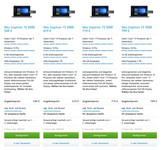
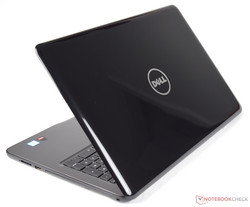
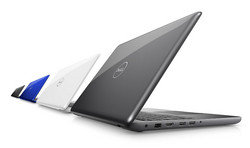

















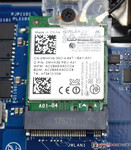
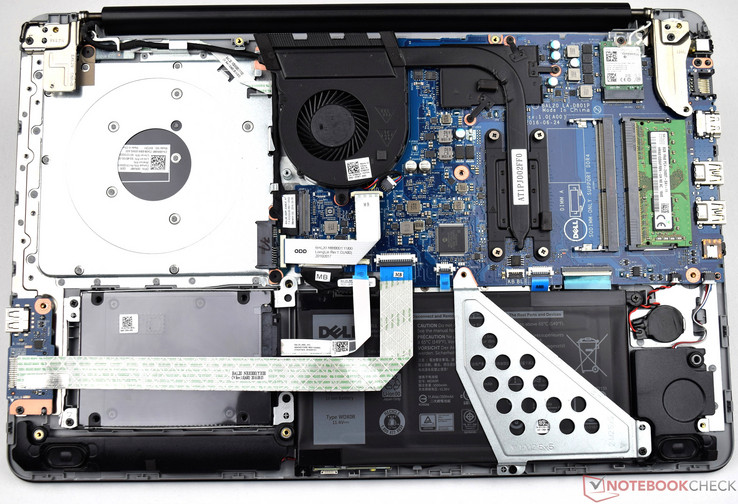

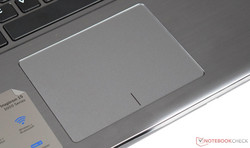




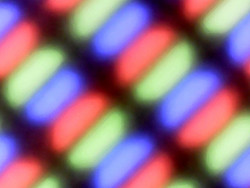
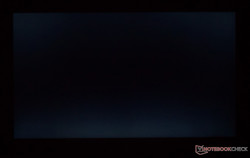
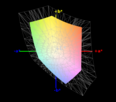
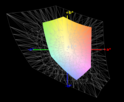
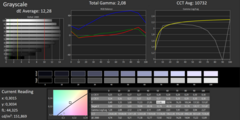
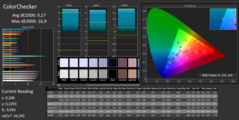
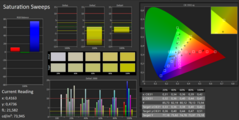
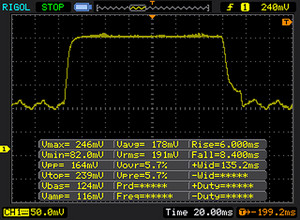
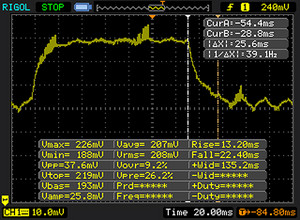
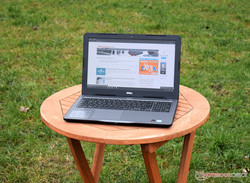

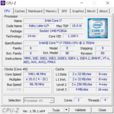
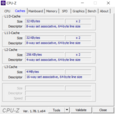
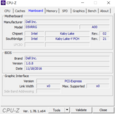
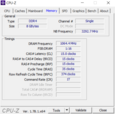
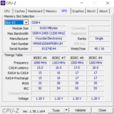
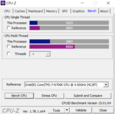








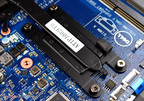
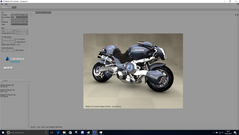
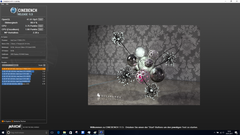
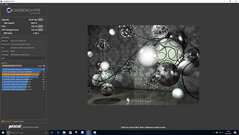
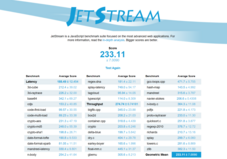
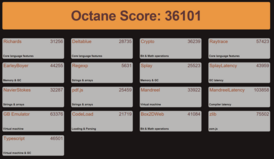
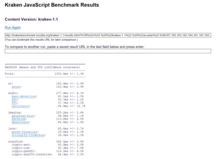
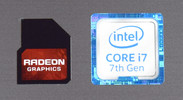






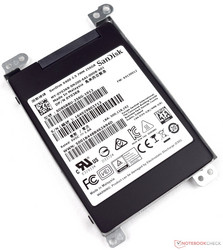
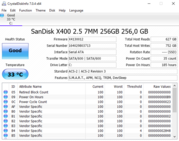
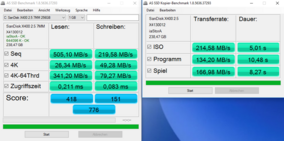
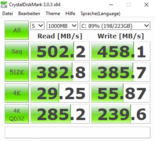


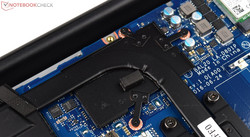















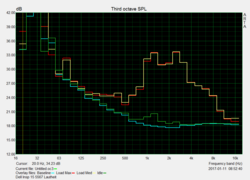
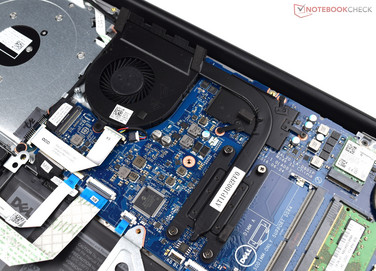
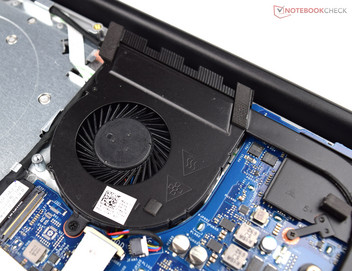
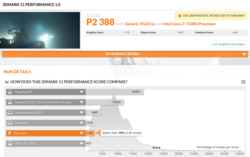
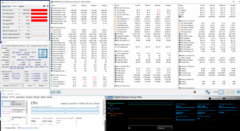
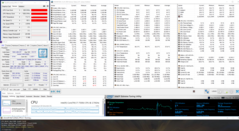
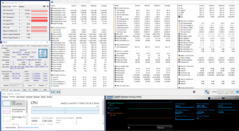
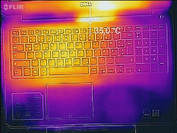
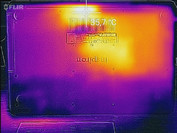
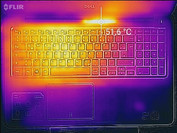
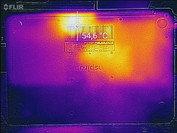


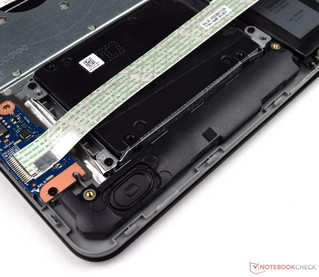
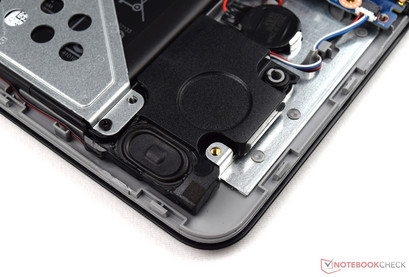
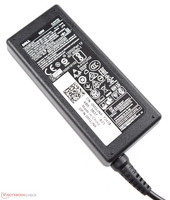
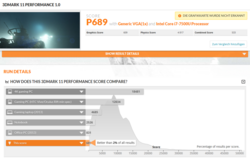
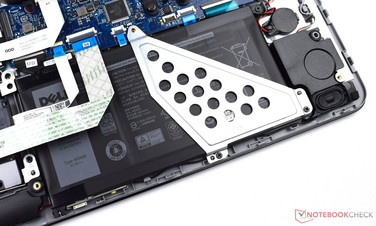
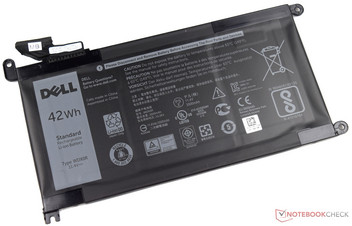
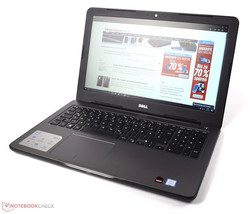


لا يوجد تعليقات
أضف تعليق